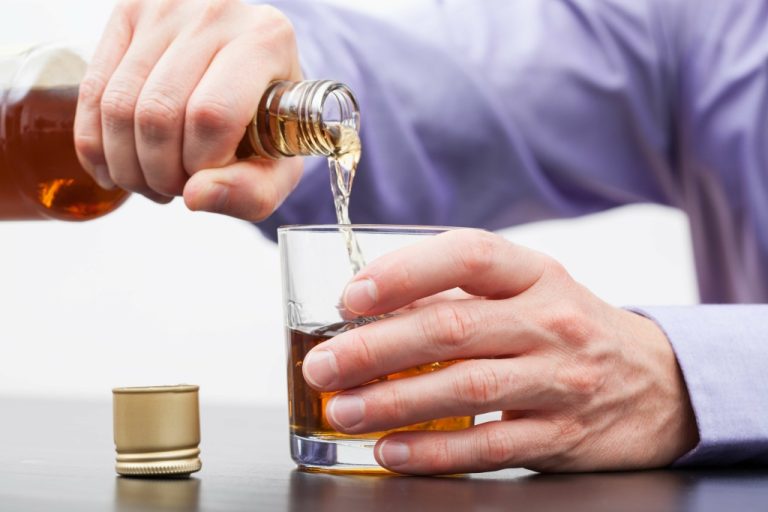Fortunately, depression—even with co-occurring substance use disorder (SUD)—is treatable. As with other types of chronic mental illness, there are usually several factors involved in the development of depression. A family history of depression, for example, may be combined with a history of past trauma or the breakup of a marriage to make an individual more vulnerable to depression. In addition, the physical and psychological effects of addiction may mask the signs of depression or worsen the symptoms of this psychiatric illness. Unlike ordinary sadness or grief, which can occur temporarily after a loss, the symptoms of depression occur nearly every day for weeks—sometimes months or years—interfering with all aspects of an individual’s life. The comparable figure in the Bureau of Labor Statistics sample was that 45 percent of EAPs were in DSP firms.
- This false sense that family relations have changed becomes a potential stressor on release, when the inmate discovers that the previously existing problems are still present and often worsened.
- The importance and value of individually tailored treatments for alcohol and drug problems cannot be overstated.
- Cognitive behavioral therapy attempts to alter the cognitiveprocesses that lead to maladaptive behavior, intervene in the chain of events thatlead to substance abuse, and then promote and reinforce necessary skills andbehaviors for achieving and maintaining abstinence.
- The consensus panel also recommends that coerced individuals be mainstreamed with noncoerced clients where possible—such as in community settings—and should not be separated into different treatment tracks.
History of Family Drug Use
The largest effort to bring adjudicated populations into contact with treatment is court-ordered screening to assess suitability for placement in community-based treatment programs under pretrial or posttrial probation. A series of these types of court-related programs were organized beginning in 1972 under the Treatment Alternatives to Street Crime (TASC) program (Cook et al., 1988). Originally created mainly to serve opiate addicts, the program soon became a common mechanism for diverting lesser drug cases, such as marijuana possession in small amounts, to avoid “clogging the justice system” with offenders who were nonviolent criminals. According to the estimates presented in Chapter 3, more than a million individuals now in custody or under criminal justice supervision in the community need drug treatment. Approximately 1 in 10 of these individuals is estimated to be currently in treatment; probably a similar number have had previous exposure to treatment.
Why are SMART Goals Important in Addiction Recovery?
SMART goals, which are Specific, Measurable, Attainable, Realistic, and Time-bound, provide a clear roadmap for individuals in addiction recovery. They help in setting realistic objectives and increase the chances of success by providing structure, focus, and motivation. They provide structure, accountability, empowerment, and effective time management for individuals seeking to overcome their addiction and achieve lasting recovery.

Criminal Justice Populations
This patient limit does not apply to OTPs that dispense buprenorphine on site because the OTP operating in this capacity is doing so under 21 U.S.C. 823(g)(1) and 42 CFR Part 8, and not under 21 U.S.C. 823(g)(2)(B). A medical and legal concept involving the transfer of any legally prescribed controlled substance from the person for whom it was prescribed to another person http://docload.ru/standart/Pages_gost/674.htm for any illicit use. Naloxone is an opioid antagonist medication approved by the FDA to reverse opioid overdose in injectable and nasal spray forms. It works by displacing opioids from receptors in the brain, thereby blocking their effects on breathing and heart rate. Recovery housing is considered under housing development goals the Legislature is seeking to accomplish.
What medications and devices help treat drug addiction?

But it seems likely that these referrals are mostly drinking/driving rather than drug cases (the published statistics on private programs are dominated by alcohol admissions and do not differentiate motivations by primary substance problem). Threats from employers or family members as well as psychological anguish and personal health problems are prominent http://ремонтнику.рф/zakaz/erythromycin-cost-topical motivators in private-tier programs. Pressure from the criminal justice system is the strongest motivation reported for seeking public treatment. Those who entered outpatient and residential programs in a 1979–1981 national sample of public program admissions were directly referred by the criminal justice system about 40 percent of the time.

Relationships with criminal justice staff are often quite important in the therapeutic process. This is especially important for offenders under community supervision, as their alliance with their probation or parole officer is critical. In a prison or jail setting, it also helps to include corrections staff as part of the treatment team, but clients should be told if this is going to be the case.
- Writing an addiction treatment plan that fully involves a patient and therapist can also reduce a patient’s feelings of isolation and hopelessness.
- Several practices noted below (i.e., Practices for attending to self-determination) describe the how of facilitating and capitalizing upon this natural human tendency.
- The final set of practices are related to attending to and enhancing clients’ self-efficacy (principle nine), and these practices are also important to and similarly described in our prior work on behavioral skills training (Magill et al., 2020).
- It offers alternative, cost-effective care options for individuals living in rural or remote areas or when physically travelling to a health care facility poses significant challenges.
Correctional therapeutic community (TC) programs should consider use of instruments to measure client progress in treatment, as defined by the TC’s goals for social and psychological change. Offenders possessing some degree of psychopathy may respond less well to traditional substance abuse treatment but benefit from intensive in-prison and community supervision that emphasizes consequences and sanctions for relapses. Sufficient resources are needed for comprehensive assessment and treatment planning, including https://mgodeloros.ru/stati/pohmele-pohozhe-ne-silno-vlijaet-na-vremja-do.html adequate staffing, clerical support, and access to computers and management information systems. Long-term recovery relies on the availability of an array of resources and support for rebuilding a life that is meaningful and rewarding. It includes education and job training, exploration and understanding of the psychological and social factors that made substance use so appealing, the teaching of coping and life skills, and fostering the development of healthy social connections to prevent relapse.
For example, one in three mothers in State prison committed her crime to get money for drugs, and 65 percent reported drug use in the month prior to the offense. For both mothers and fathers, 25 percent met the diagnostic criteria for alcohol abuse (Mumola 2000). In a survey of female inmates, Acoa and Austin (1996) found that nearly 20 percent of mothers were concerned that one or more children may have been exposed to substances in utero. Family can represent a connection to the outside world and can be a source of stability for offenders as they move through the criminal justice system. Moreover, the quality of the offender’s relationship with his or her family can be an important factor in recovery.
In some cases an interagency audit, however informal, can be useful to identify gaps in the treatment plan and barriers to the client’s progress, as well as the strengths present in the client’s situation. As has been documented in several chapters within this Report, the great majority of patients with substance use disorders do not receive any form of treatment. Nonetheless, many of these individuals do access primary or general medical care in community clinics or school settings and research is needed to determine the availability and efficacy of treatment in these settings and to identify ways in which access to treatment in these settings could be improved. The current failure to acknowledge and address substance use disorders in these settings has reduced the quality and increased the costs of health care. Moreover, access and referral to specialty substance use disorder care from primary care settings is neither easy nor quick. Better integration between primary care and specialty care and additional treatment options within primary care are needed.
